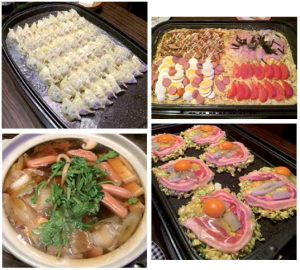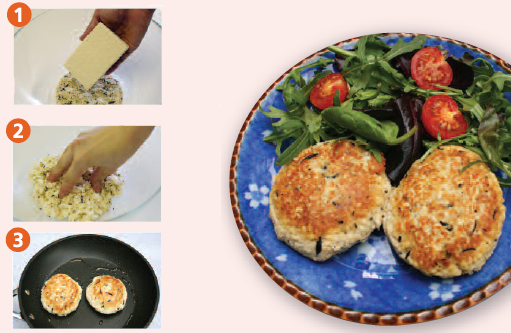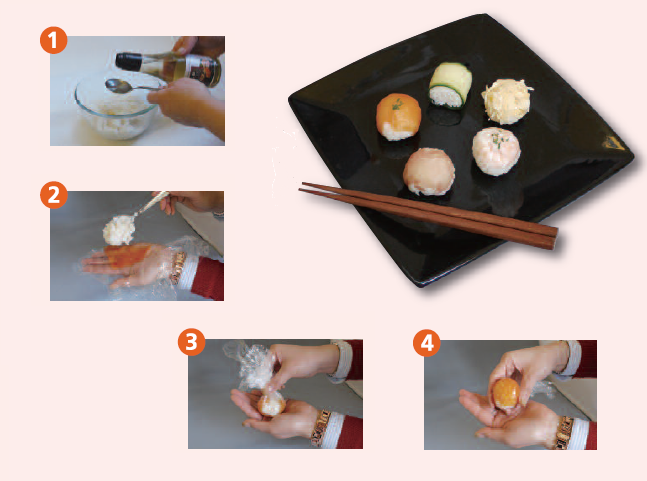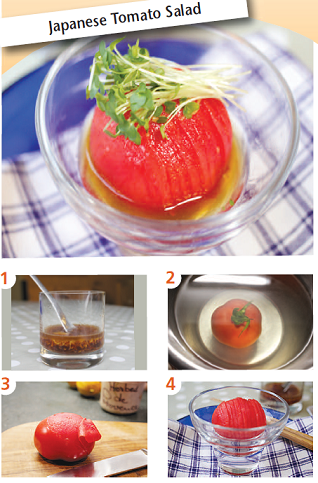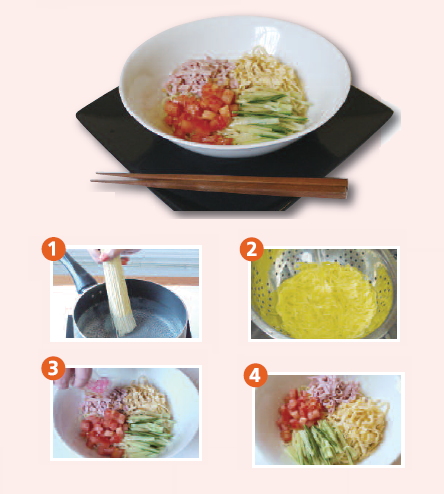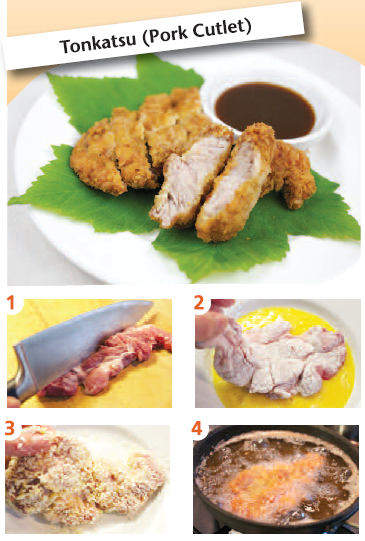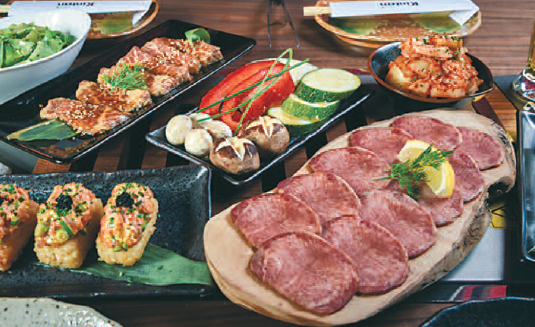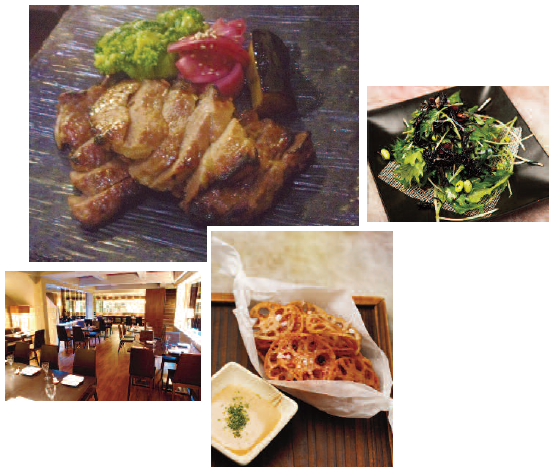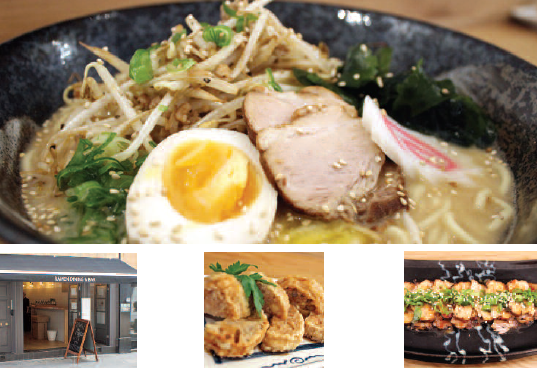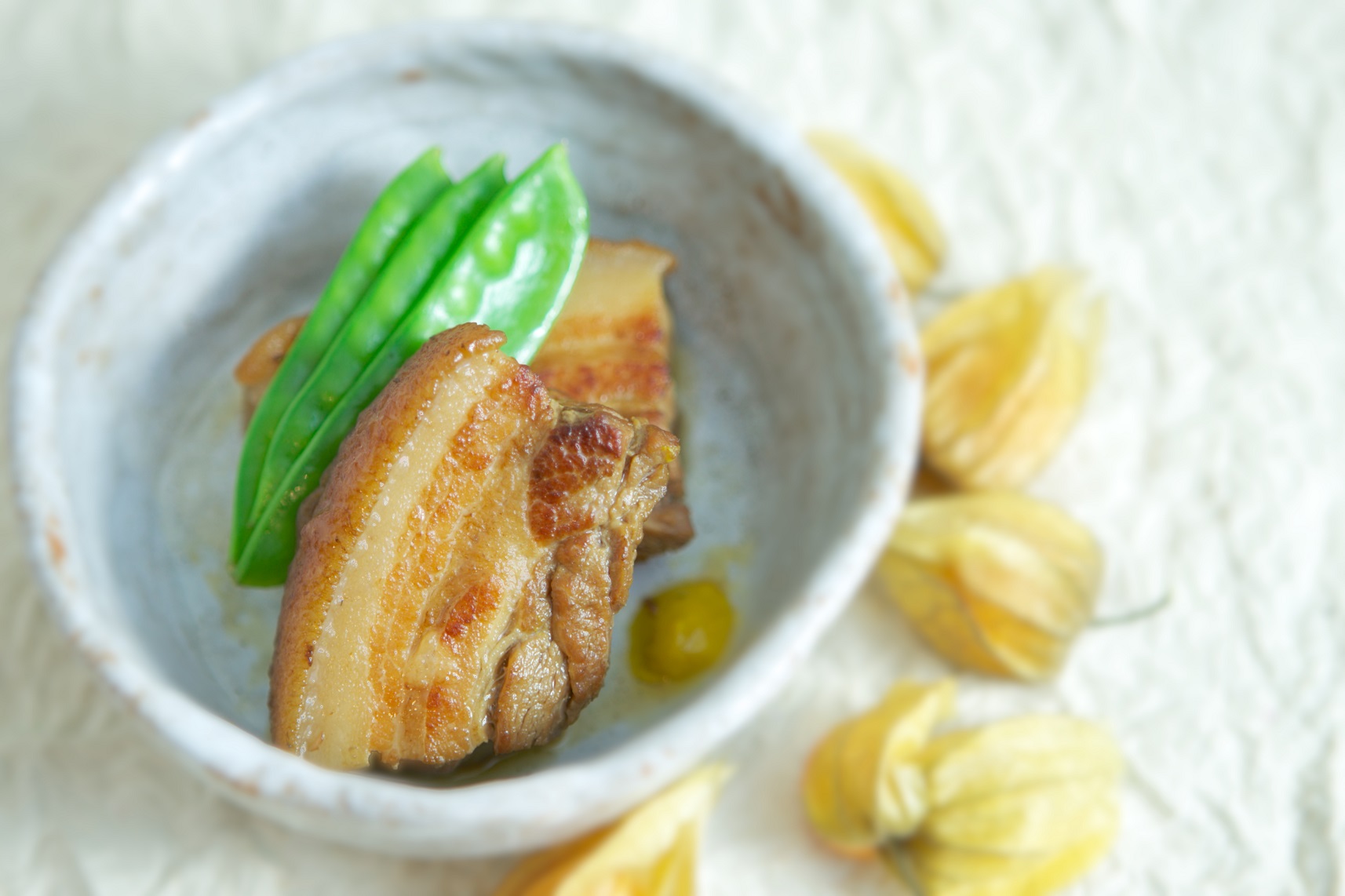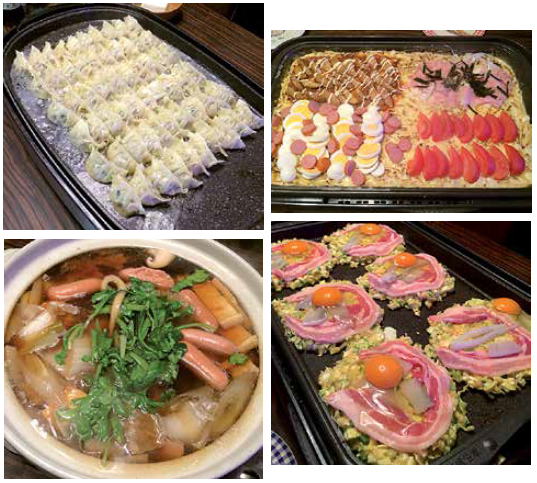
Great dishes on a hot-plate
When she invites guests over, Maeda Haruyo is never short of ideas to entertain and please them.
What do you eat for family meals? Spaghetti bolognaise?, bangers and mash? or perhaps a barbecue if it is summer time? It’s true that when the family gets together in the U.K, we often use the oven to roast chicken or leg of lamb… In Japan, we have a large range to choose from too. Almost every household has a portable electric hot-plate on which you can prepare yakiniku.
This is not the same as a barbecue and we use it to cook sliced beef or beef tongue, tontoro (fatty pork), or sausages and vegetables cooked with a special sauce. With this handy little hot plate you can eat yakiniku all year around and can even use it to cook okonomiyaki (Japanese cabbage pancakes). As you can cook six of them in one go, it’s very useful for a large family like mine! If you decide to use the hot plate as a frying pan, there are even more options to try out. You can make yakisoba (fried noodles) for 5 people or cook 60 gyoza (grilled dumplings) in one go. These traditional dishes are easy to cook on a hot-plate, but you can also try out some more adventurous dishes too. This year, I also made:
• A paella. To get it right, you shouldn’t add the shellfish at the beginning as they’ll toughen up while the rice is cooking. It is preferable to add them in the last five minutes.
• A gratin. Yes, it is possible – you can make it without an oven. Using a blowtorch, the grated cheese is melted and browned to make it look very appetizing.
• An omerice (hollow omelet with rice and chicken). Firstly the eggs are cooked and put to one side, before the rice is cooked with chicken and onion and seasoned with with ketchup.
Finally, the eggs are placed on top with added ketchup. Another traditional cooking vessel used in Japan is the ubiquitous nabe (an earthenware casserole dish). There are several sizes available, catering for for between 1 and 6 people and of course, in my home we have the largest size. We choose the flavour first, then the main ingredient and finally the vegetables. There are thousands of combinations.
– Yose nabe. Yose means “to collect together”. Using dashi broth as a base for the dish, various ingredients are added in, such as chicken, fish, shellfish, vegetables and udon noodles, etc.
– Kimchi nabe. Using lots of kimchi (Korean style marinated cabbage), this dish also contains vegetables and Chinese noodles.
-Shio buta nabe. This is a dish prepared with pork soaked in salted water for a couple hours, to which vegetables, udon noodles and other ingredients are added.
Preparing these dishes with everyone around the hot-plate creates a warm and friendly atmosphere. We can eat, drink and have a wonderful conversation without having to go to the kitchen. I can’t think of any better way to get the family together or hang out with friends!
Maeda Haruyo

